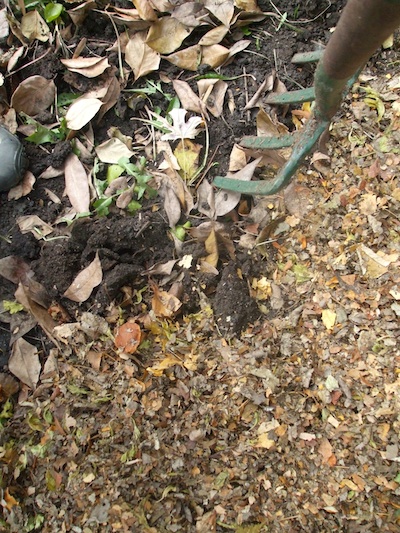
Ok. I confess. I’m a leaf thief. I have been for years, targeting one neighbor who faithfully chopped and bagged his leaves and left them at the edge of his property. Every fall, I’d drive my car four houses away, load the trunk, back and front seats with bags of leaves and return home.
When that neighbor moved away, I had to widen my territory. Now, I scour the ‘hood looking for bagged leaves, especially those that already have been chopped.
This year, a friend offered me chopped leaves and I immediately said yes to six bags of probably one of the best gifts from nature.
When I get home with the leaves, I have several options.
When chopped, I can add leaves directly to the soil in new or existing garden beds. This fall, I’m mixing leaves into the vegetable bed and layering some on top. This effort will result in improved soil quality.
Chopped leaves serves as mulch over newly planted spring-blooming bulbs or as a topdressing in other garden beds. If beds have bark mulch, move it aside and ring perennials, shrubs and trees with the chopped leaves, then replace the mulch.
If the leaves are not chopped, I line them up near the compost pile. As I add food scraps to the pile, I can cover them with leaves.
Bagged leaves can be left to break down through winter, creating a form of leaf mold. This is like the fluff you find on the ground under layers of leaves in woodlands and forests. This can be mixed in beds or as a top dressing around plants in spring.
Sometimes, I dump whole leaves on the ground and run over and bag them with my electric mulching mower. Some people will put whole leaves in a garbage can and chop them with a string trimmer. Others may have chipper shredders to process whole leaves. Be sure to wear eye protection when using any of these methods.
Is the effort worth it? Absolutely. We’re recycling and reusing a natural gift and improving our garden. What can be better than that?

Chopped leaves are one of the best things to add to new or existing garden beds. Here, they are getting mixed in the vegetable bed. (C) Jo Ellen Meyers Sharp